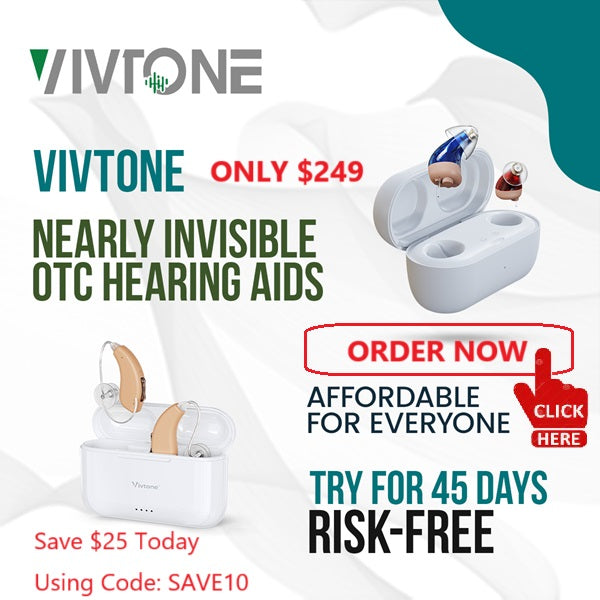How to Wear a Hearing Aid with Glasses

If you wear glasses and are thinking about getting a hearing aid, or if you’re already wearing both, you might be wondering how to make them work together without any fuss. This guide is all about making life easier for those of us juggling both. We’ll walk through choosing the right hearing aid that doesn’t get in the way of your glasses, and share straightforward tips to wear them comfortably at the same time.
1. Getting Your Gear Right: Picking Compatible Hearing Aids and Glasses
When you’re managing both glasses and hearing aids, the right fit is crucial. Let’s break down some key things to consider so your devices don’t just coexist—they complement each other.
Know Your Hearing Aid Types
- Behind-The-Ear (BTE): These sit snugly behind your ear with a tube that directs sound into an earpiece in your ear canal. They’re pretty common and vary in size. If you wear glasses, the smaller BTE models might be more comfortable because they take up less space behind your ears.
- In-The-Ear (ITE) and In-The-Canal (ITC): These are smaller than BTE aids and fit partly or completely inside your ear canal, making them a good bet if you’re worried about your hearing aid clashing with your glasses.
- Completely-In-Canal (CIC) and Invisible-In-Canal (IIC): If you want something super discreet, these types go deep into the ear canal. Since they don’t sit behind the ear at all, they’re great for glasses wearers who prefer something virtually unseen and out of the way.
Choosing the Right Frames
When you’re picking out glasses, consider lighter frames with thinner temples (the part that extends over your ears). These reduce the pressure on your ears and make it easier to accommodate a BTE hearing aid if that’s what you’ve chosen. Flexible frame materials like titanium or bendable plastics can also give you that extra bit of comfort you need.
Test the Combination
Before finalizing your choice, try on your hearing aids with your glasses. This isn’t just about checking for physical interference; it’s about finding a combination that feels good even after hours of wear. Sit down, walk around, read a book—make sure nothing slips or pinches. Your audiologist can be a big help here, offering options for customization or adjustment based on your specific needs.
Getting the right setup might take a bit of trial and error, but it’s worth it. After all, you’ll be wearing these devices a lot, and you want them to feel as good as they work. Remember, comfort leads to consistent use, which is key to making the most of your glasses and hearing aids.
2. How to Comfortably Wear Glasses with Hearing Aids

Now that you’ve picked out the perfect pair of glasses and hearing aids, let’s talk about how to wear them together without any trouble. Here are some simple, day-to-day tips to help you avoid common annoyances.
The Right Way Round: Putting Them On
- Glasses First: Always put your glasses on before your hearing aids. This helps you position them correctly and avoid knocking your hearing aids out of place.
- Hearing Aids Second: With your glasses comfortably in place, slip your hearing aids in. For BTE models, tuck them behind your ears right alongside the arms of your glasses. If it feels tight, don’t force it—look into thinner glasses arms for a better fit next time.
Adjusting Like a Pro
- Find Your Sweet Spot: Take a moment each day to adjust the position of both your glasses and hearing aids. A small shift can make a big difference in comfort.
- Secure Your Specs: If your glasses tend to slide down your nose, consider getting ear hooks or anti-slip nose pads to keep them steady. This also means less fiddling around and reduces the risk of disturbing your hearing aids.
Daily Comfort Checks
- Mind the Pinch: Throughout the day, pay attention to any pinching or pressure. If your hearing aid is causing discomfort, your audiologist may be able to tweak the fitting.
- Give Your Ears a Break: If you’re home and don’t need your glasses or hearing aids, take them off to give your ears some downtime.
Take a minute each day to nudge them into their happy place, and if they start to slip, there’s always a little hack to keep them anchored. Keep an eye out for any squeeze or discomfort, and chat with your audiologist if you feel a pinch.
3. How to Solve Common Issues with Glasses and Hearing Aids

Even with the best setups, you might run into a few hiccups when wearing glasses and hearing aids together. Don’t worry—most problems have simple fixes. Here’s how to handle the most common ones like a champ.
Handling Feedback Frustration
- Keep Them Apart: Sometimes, your hearing aid might pick up on the sounds from your glasses if they’re too close. This can cause that annoying whistling known as feedback. To fix it, just make sure there’s a tiny gap between your hearing aid and the arms of your glasses.
- Check Your Seal: If your hearing aid doesn’t fit quite right, sound can escape and bounce back into the microphone. If you’re constantly battling feedback, a trip to your audiologist for a fitting adjustment could be in order.
Avoiding the Slip-and-Slide
- Get a Grip: Glasses tend to slide down our noses, especially when we sweat. If this is nudging your hearing aids out of place, look for glasses with better grip. Rubber nose pads or temple tips can do wonders.
- Balance is Key: If your hearing aids feel like they’re always on the verge of falling off, it may be an issue of how they’re balanced on your ears. Ask your audiologist about getting a more secure fit or explore accessories designed to stabilize BTE models.
Easing the Squeeze
- Pressure Points: Feeling a bit squeezed behind the ears? Both your glasses and hearing aids should sit comfortably without pressing too hard. Sometimes, all it takes is bending the wire of your glasses for a looser fit. If that doesn’t work, silicone pads can cushion the pressure.
- Take It Slow: Give yourself time to get used to the feeling of both glasses and hearing aids. Start by wearing them for short periods and gradually increase as you feel comfortable.
If things still aren’t quite clicking after giving these tips a whirl, just give your audiologist or optometrist a shout—they’re the go-to team for getting your gear to play nice.
Finding Your Comfort Zone
To get comfortable with both glasses and hearing aids, tailor them to fit you just right. It’s all about how they feel, so take the time to tweak them. If they’re not sitting well or you’re getting feedback, a small fix can often do the trick. Talk to your audiologist if you need to, but most of all, be patient as you find what works for you. Once it all clicks into place, wearing both will be a breeze. And don’t forget, sharing your own tips could help someone else out too!
FAQs
Q1: Can I participate in sports while wearing both glasses and hearing aids?
Yes, you can engage in sports while wearing both. Secure your glasses with a sports strap and consider using hearing aid clips or a sweatband to protect and keep your devices in place. Consult your audiologist for sport-specific advice.
Q2: What should I do if my hearing aids are interfering with my glasses when I’m on the phone?
Try using phones with hearing aid-compatible ratings or use speakerphone mode. You may also want to explore Bluetooth-enabled hearing aids that can directly connect to your phone.
Q3: Is it possible to wear sunglasses with hearing aids?
Absolutely. Opt for sunglasses with thin temples to minimize space taken up behind your ears. Clip-on or transition lenses may also be a good alternative to separate sunglasses.
Q4: How often should I have my hearing aids and glasses checked for fit?
Audiologists recommend having hearing aids checked every 6 months, while optometrists suggest an annual eye exam. If you experience changes in comfort or effectiveness before these intervals, schedule an appointment.
Q5: What type of hearing aid is best if you wear glasses?
If you wear glasses, In-The-Ear (ITE) or Completely-In-Canal (CIC) hearing aids are often recommended because they fit within the ear and don’t interfere with the glasses’ arms. However, small Behind-The-Ear (BTE) models are also an option since they can be positioned to fit comfortably alongside the glasses.
Q6: Do glasses go inside or outside the hearing aid?
Glasses should be worn in their natural position, resting on your ears and nose, which means the arms of the glasses will go outside the hearing aid. For BTE models, place the hearing aid behind your ear after putting on your glasses to ensure a comfortable fit.
Q7: What things should a person avoid when wearing a hearing aid?
When wearing a hearing aid, it’s important to avoid moisture (such as water or excessive sweat), extreme temperatures, and exposure to hair care products like hairspray or gel. Also, one should be cautious around very loud noises and prevent feedback by keeping electronic devices at a reasonable distance from the hearing aid.





